Zumaia, natural areas of interest (II)
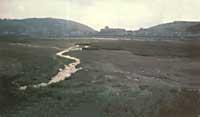
The beach marsh of Santiago is an alluvial plain, formed by quaternary sediments and located at the mouth of the river Urola. On its surface there is an interesting area of vegetation, in which a gramineous plant species predominates to the Spartina alterniflora. This plant, from North America, is subjected daily to the influence of the sea, presenting special adaptations to adapt to this harsh residence. Other halophilous species, some of which are very important (such as the Limonium humile shown in the image), appear next to this grass. This species is only found in another Gipuzkoa marsh in the Basque Country, being the new mention of Zumaia.
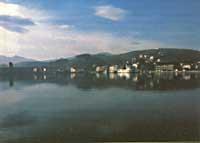
On the other hand, in the beach marsh of Santiago, to be able to contemplate throughout the year different birds related to these ecosystems, the ecological value of this area is very high. Although the highest number of species is observed in spring and autumn, in the winter area it is the groups of gulls that mainly use this area. The Argenic Gull and the Reidora Gull (Red Gull) are the most abundant, with a figure of 400 in winter. This small gull (39 cm) is the most common in Europe and has become an epidemic in the breeding territories (Holland, Belgium,...). It stands out among all seagulls, with reddish legs and beaks.
Another species abundant in the marsh of Zumaia is the argenic gull, outstanding nesting of our coasts (Ogoño-Izaro, Gaztelugatxe, Bakio, Ulia, Jaizkibel...). This large species (56 cm) has a weight of up to one kilo. Most of the rocky seagulls observed in Zumaia are of yellow legs (typical characteristic of this local species). However, there are also those who come down from Europe, with pink legs.
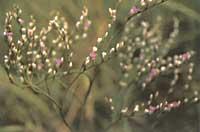
Within the family of seagulls are observed other species such as the shadowy gull (usually only some specimens between the argenic gull), the patidifying gull, the cruel charrán (the latter quite abundant in migratory episodes) (90-IV-13, 20 individuals), the small charrán...
The important group of birds that appears in the marsh of Zumaia is undoubtedly the most limestone. When it comes to a bird pass, the number of limicolos is usually quite high. The 15-IV-89 400 different limicolos made a long break in the area mentioned a nice afternoon. Among these limicolos, the common reel is the most abundant (89-IV-22, 200 birds), but within this group you can see many other species: avefrío, gray ring, white slide, large chorlitejo, coarse chorlitejo, small chorlitejo, zarapito con brojas, zarapito grande, clay crujiente, pardilla. Some of them are wintering but always appear in small groups (89-XII-22, common ring 8 birds). There are other lilies that are seen from time to time and very regularly: blindness, chorlito, abozeta, zancudo, white caste and pedrera.
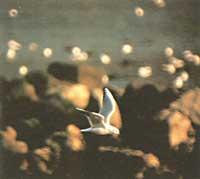
The reader will realize that the number of bird species that can be observed in this unique marsh is very remarkable and at the same time very interesting, as they are typical species of these endangered ecosystems in our territory. There are also some quite rare species. The common swan, for example, has been observed in the Santiago marsh. In Euskal Herria it has rarely been mentioned, and although in the summer of 1987 it was seen in Txingudi, nesting a few kilometers from our shore you can think that they are those who come from there. Another minority species in this area is the common paita. In addition, we can cite the following species that are observed irregularly: the goose, the txistulari, the wild duck and the common heron
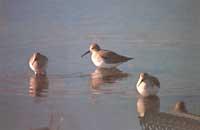
As a climax to the group of birds, we highlight some observations. When we talk about Bedua, we repeat that it was a very appropriate place for the different birds, and both in Bedua and on the beach of Santiago, most of those in the marsh use these two wonderful places at once, depending on the marine influence. Therefore, we consider that these two areas must be protected by forming a single system between the two. On the other hand, when protecting these types of areas (in this case for the protection of birds) “hunting is prohibited”, but being realistic, since the areas that want to be protected are very small a few meters from their limits, it does not seem logical that this prohibition does not serve. However, in the future we could talk about this issue and for the moment we will continue to describe this whole area.
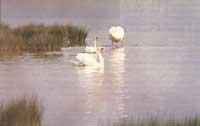
This beach, with the plant system of the last dune beaches remaining in Gipuzkoa, is unique together with that of Zarautz. Therefore, the plants that live in them are in danger of extinction, depending on the disappearance of these places of life. It is very sad that the good specialization that these plants have had to get in order to live in them throughout the year, they are sent to picota by the wonderful chiringuitos, the cement routes, the car parks... and, of course, with them these wonderful plants. He thinks living on beaches and dunes is very difficult. On the one hand the sand is not very compact and the wind is very easy to carry on all sides.
Therefore, they had to develop strong root devices. Moreover, the permeability of the sand makes the water filter very easily, and also when water is needed, it is the problem. To solve all this, some have achieved water retention systems when it rains and others with long roots. In addition, in these ecosystems the force of the sun or wind is very strong. Also, considering the salinity that the sea sends through the water particles and of course the pressure that is exerted in these areas, it is evident that the conditions of habitability are very harsh and that these plants deserve another treatment, being very appropriate to carry out different research.
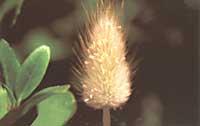
That is why the proposal of the Provincial Council of Gipuzkoa for this area to be protected, is not only fair, but necessary and necessary for a long time. However, it is considered advisable that during the execution of this proposal, the affected person adopt a series of minimum measures, such as collection and fire in certain places, cleaning the area, general information, exhaustive control of vegetation, etc.
However, although some species are not mentioned, if the reader wishes to receive general and detailed information about the vegetation of this area, he will find it in two books that are on the street: “Florist catalogue of Alava, Vizcaya and Guipúzcoa” and “Vegetation of the Autonomous Community of the Basque Country”, produced by different local authors and published by the Basque Government in Spanish.
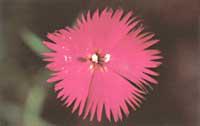
As already indicated, we have tried to mention the main ecological riches of this ecosystem in the area of Zumaia, which we still have to mention the third. But in the meantime, we are convinced that if you take a tour of these places, even the worst time of summer, you will realize the beauty they have when you go in the morning or in the afternoon.
Buletina
Bidali zure helbide elektronikoa eta jaso asteroko buletina zure sarrera-ontzian











